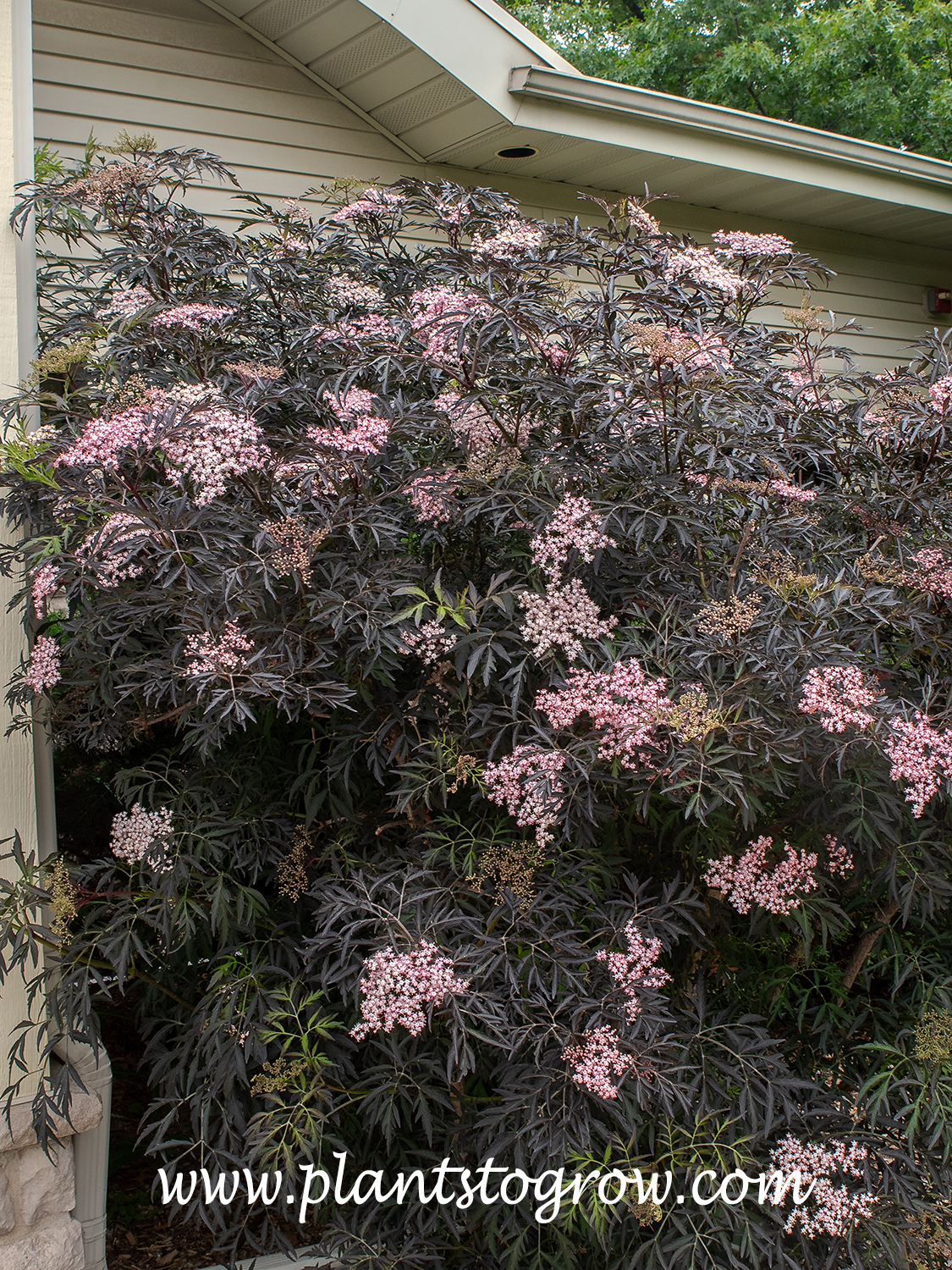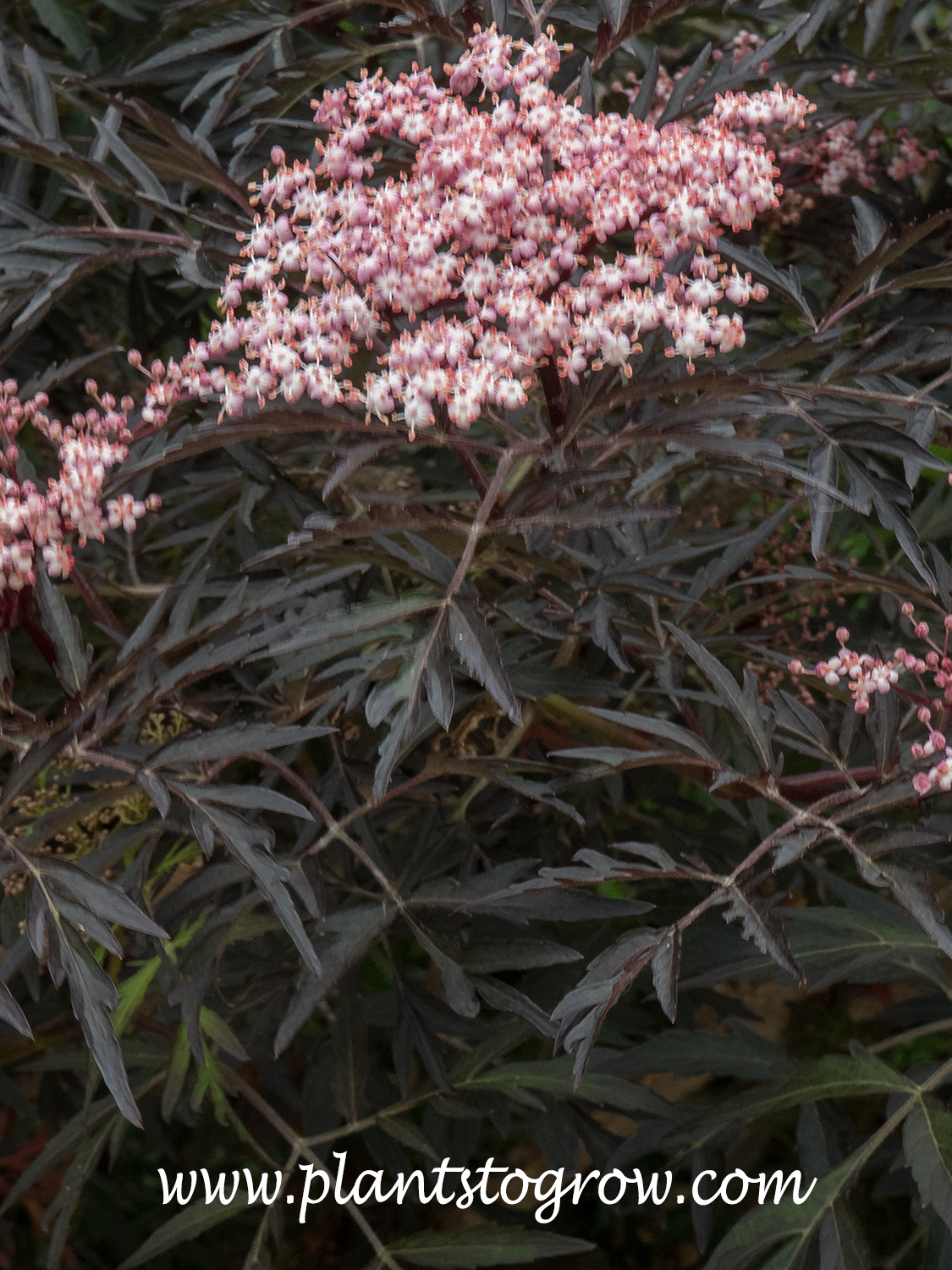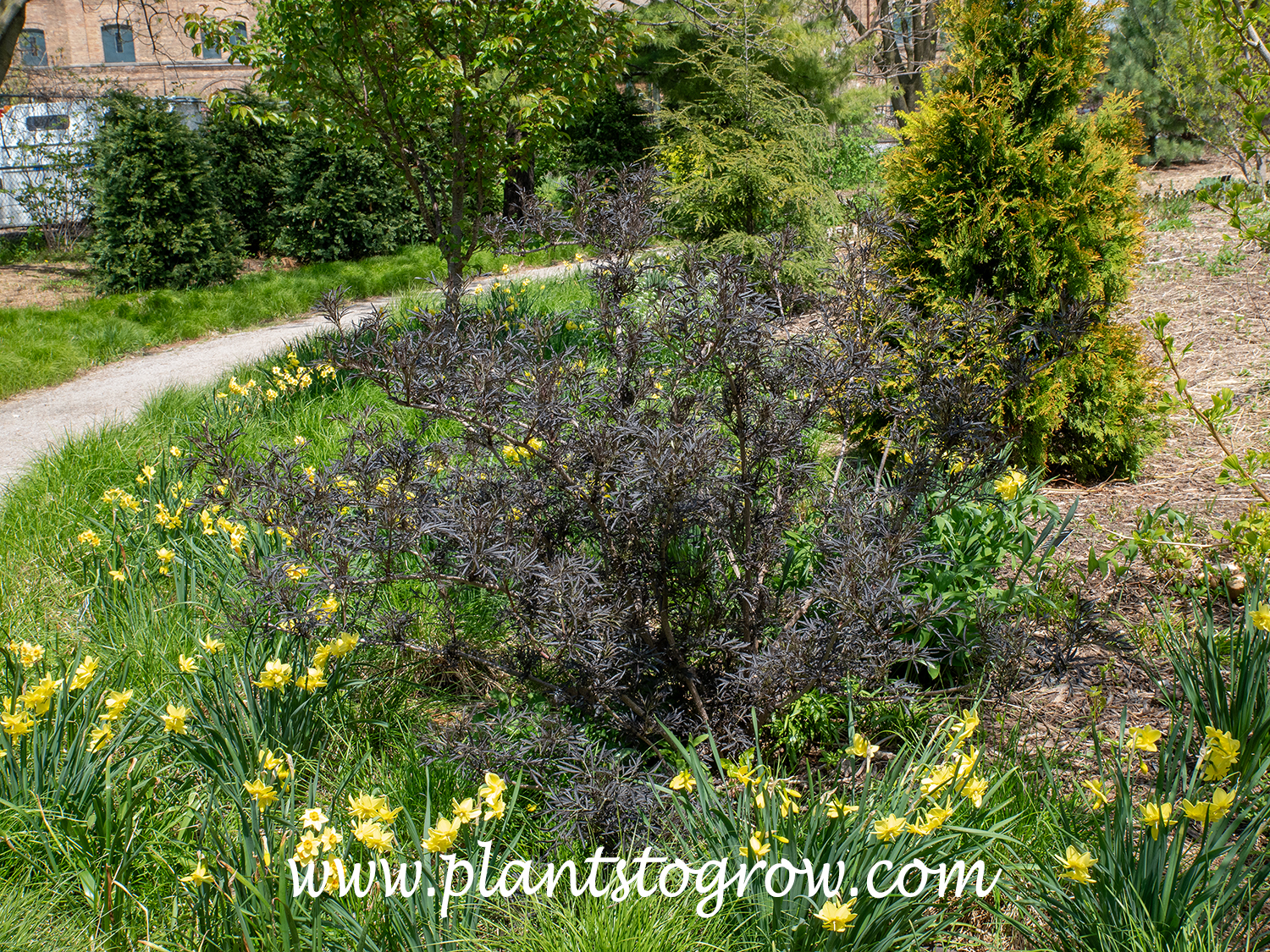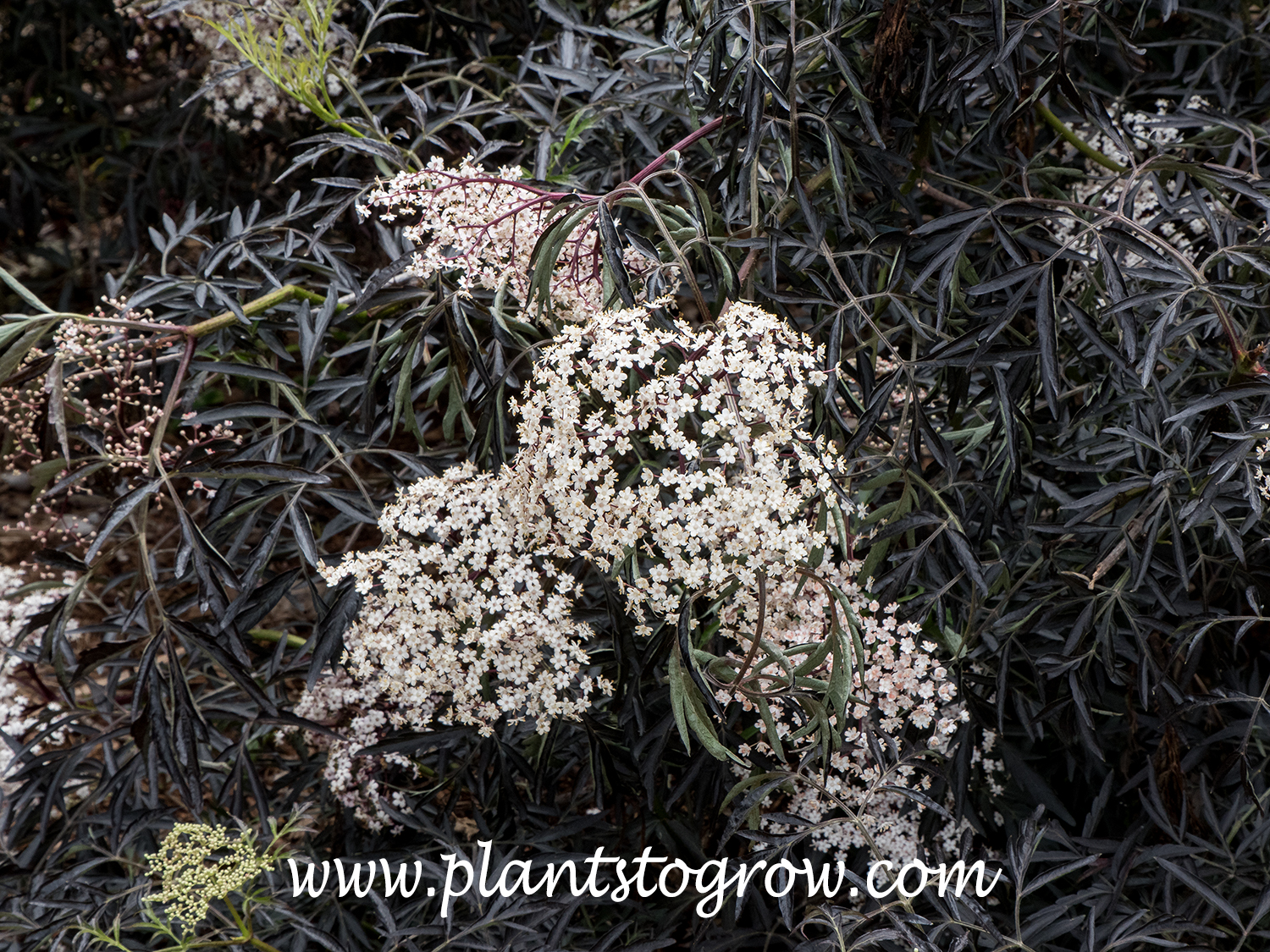| Description | Black Lace Elderberry (Sambucus nigra) is a medium to large deciduous shrub with lacey purple-black leaves. Has pink flowers and dark purple fruit. |
|---|---|
| Pronunciation | (sam-BU-kus)(NIE-gra) |
| Plant Type | Shrubs Deciduous |
| Hardiness Zone | (3)4-7(8) |
| Sunlight | full, mostly sunny, some shade |
| Moisture | average, moist, avoid standing water |
| Soil & Site | average, moist, avoid standing water |
| Flowers | pink, lemon-scented, borne in umbels, elderwater produced from the flowers for confectionary |
| Fruit | berry-like drupes, dark blackish-red elderberries, mildly toxic, relished by birds, readily reseeds |
| Leaves | deeply cut, pinnately compound, dark purple |
| Dimensions | 6-8 by 6-8 feet (HS) |
| Maintenance | It can be cut back hard in the spring or pruned to maintain size. It has a spreading suckering habit and is also spreading by seeds. |
| Propagation | division, hardwood cuttings, cuttings, U.S. Plant Patent PP15,575 issued February 22, 2005. |
| Cultivar Origin | England, 1988 |
| Misc Facts | The leaves and stems are poisonous, and the fruit is toxic to varying degrees. Cooking can remove the toxin. Sambucus is derived from the Greek word "sambuca," a string instrument supposedly made from the wood of the elder. |
| Notes & Reference | #01-Manual of Woody Landscape Plants (Michael Dirr), #144-Missouri Botanical Gardens website (www.missouribotanicalgarden.org), #277-Cold Hardy Fruits and Nuts (Allison Levy and Scoot Serrano) |

Cart







